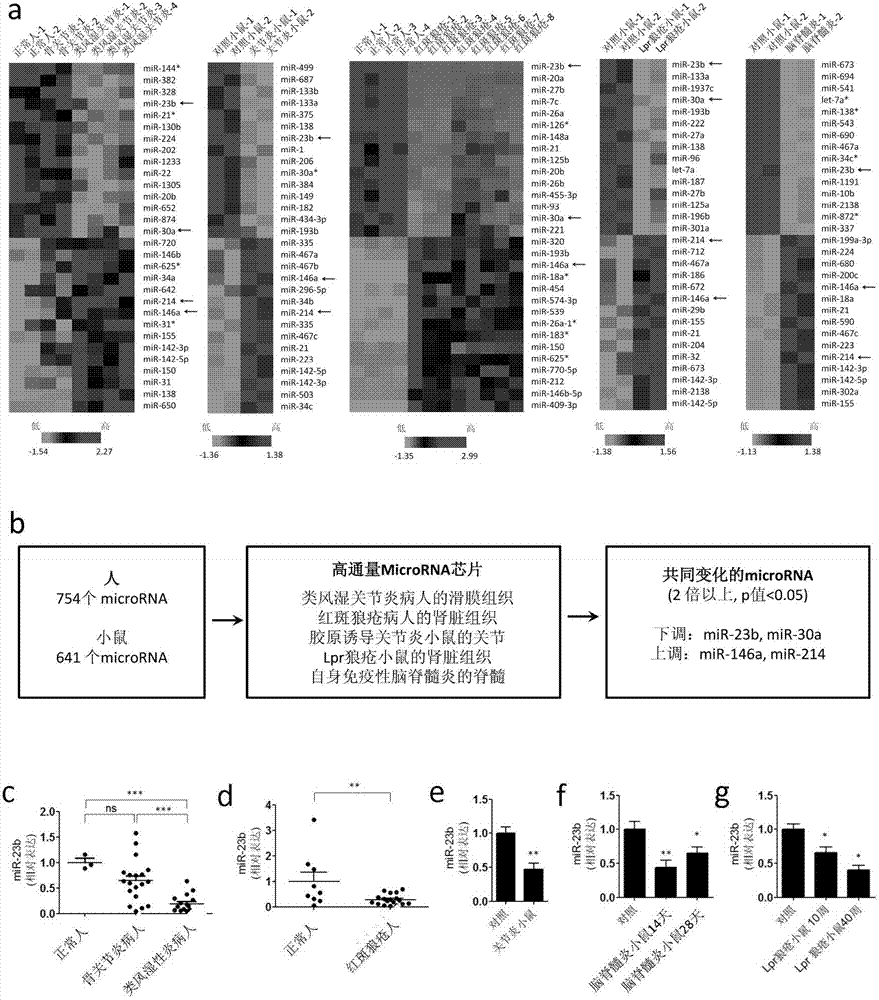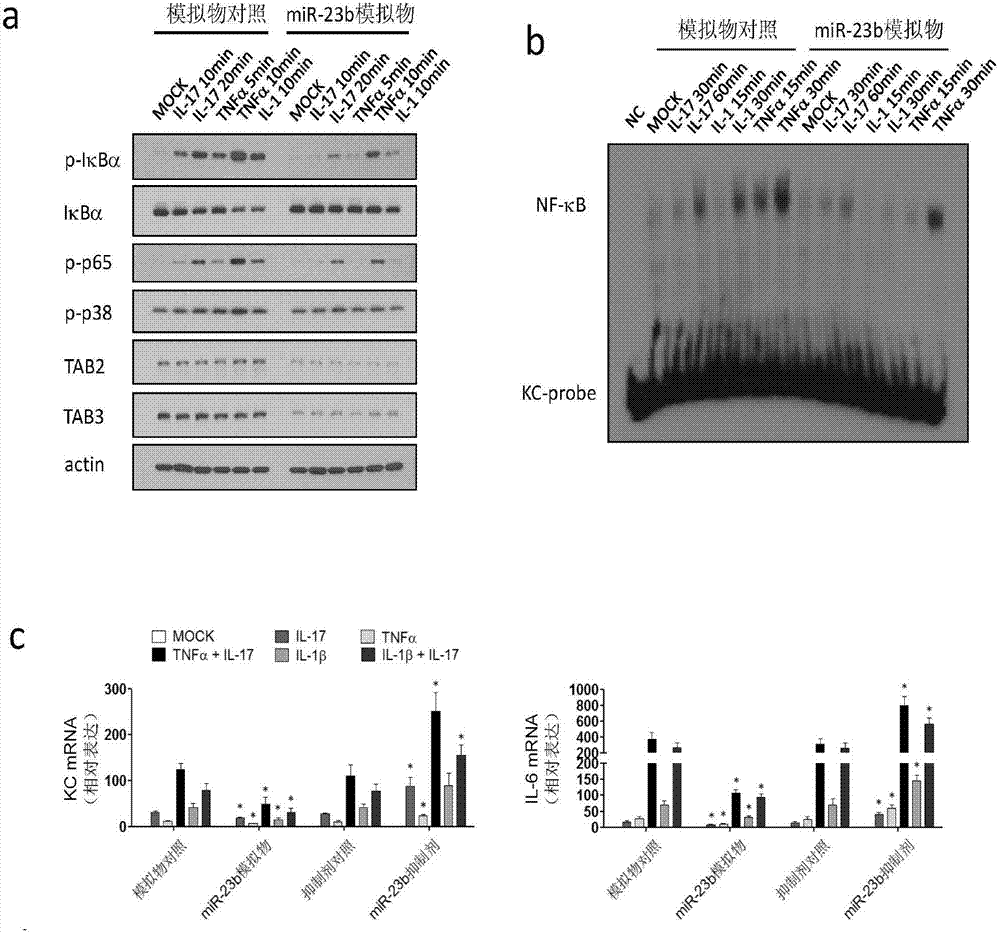microRNA related to autoimmune disease and application thereof
An autoimmune and miRNA-23 technology, applied in allergic diseases, DNA/RNA fragments, metabolic diseases, etc., can solve problems such as unclear miRNA
- Summary
- Abstract
- Description
- Claims
- Application Information
AI Technical Summary
Problems solved by technology
Method used
Image
Examples
Embodiment 1
[0179] Example 1 The expression of miRNA-23b is generally down-regulated in autoimmune diseases
[0180] In order to determine whether a ubiquitous miRNA plays a role in the inflammatory injury site of various autoimmune diseases, this embodiment takes RA and SLE patients and related mice (CIA corresponds to RA, MRL / lpr corresponds to SLE, EAE corresponds to MS ) of inflamed tissues were subjected to comparative miRNA microarray analysis. The human miRNA chip contains 754 miRNAs, and the detection samples include the synovial tissues of RA patients and control groups, and the kidney biopsy tissues of SLE patients and control groups; the mouse miRNA chip contains 641 miRNAs, and detects CIA and control mice respectively. Joint samples, kidney tissue from female MRL / lpr and control mice and spinal cord specimens from EAE and control mice.
[0181] The detection results are as follows: Compared with the control group, in all autoimmune disease samples, including RA, SLE, CIA, MR...
Embodiment 2I
[0184] Example 2 IL-17 down-regulates the expression of miR-23b
[0185] A common feature of inflammatory autoimmune diseases is local chronic inflammation, which is manifested in the increased production of inflammatory factors such as TNFα and IL-1β, both of which can regulate the expression level of miRNA in cell culture. MiR-23b-3p was significantly decreased in local inflammatory tissues of RA and SLE patients, while inflammatory factors including TNFα, IL-1β, IL-17, IL-6 and IFNγ were significantly increased in these tissues ( figure 2 c, 2d).
[0186] The inventors performed a linear correlation analysis on the transcript level of miR-23b-3p and the above cytokines, and the results showed that the expression level of miR-23b-3p was inversely correlated with the level of IL-17, both in RA patients and their controls group (P figure 2 a, 2b), suggesting that the expression of IL-17 in inflammatory tissues may regulate the downregulation of miR-23b-3p.
[0187] To furth...
Embodiment 3
[0189] Example 3 MiR-23 family inhibits signaling pathways and gene expression mediated by inflammatory factors
[0190] The activation of NF-κB signaling pathway mediated by inflammatory factors plays an important role in the pathogenesis of autoimmune diseases. The inventors found that overexpression of miR-23b-3p significantly inhibited the activation of NF-κB mediated by TNFα and IL-1β as well as the activation of NF-κB mediated by IL-17 ( image 3 a, image 3 b). Next, the inventors in human FLS cells ( image 3 c), mouse primary kidney cells ( image 3 d) and mouse primary astrocytes ( image 3 In e), it was found that miR-23b-3p mimics could inhibit the induced expression of inflammatory factors (TNFα, IL-1β and IL-17) to their downstream inflammatory genes such as IC and IL-6, while miR-23b-3p inhibitors This effect is enhanced. The above results indicated that miR-23b-3p inhibited the signaling pathway and gene expression mediated by inflammatory factors.
[01...
PUM
 Login to View More
Login to View More Abstract
Description
Claims
Application Information
 Login to View More
Login to View More - R&D
- Intellectual Property
- Life Sciences
- Materials
- Tech Scout
- Unparalleled Data Quality
- Higher Quality Content
- 60% Fewer Hallucinations
Browse by: Latest US Patents, China's latest patents, Technical Efficacy Thesaurus, Application Domain, Technology Topic, Popular Technical Reports.
© 2025 PatSnap. All rights reserved.Legal|Privacy policy|Modern Slavery Act Transparency Statement|Sitemap|About US| Contact US: help@patsnap.com



